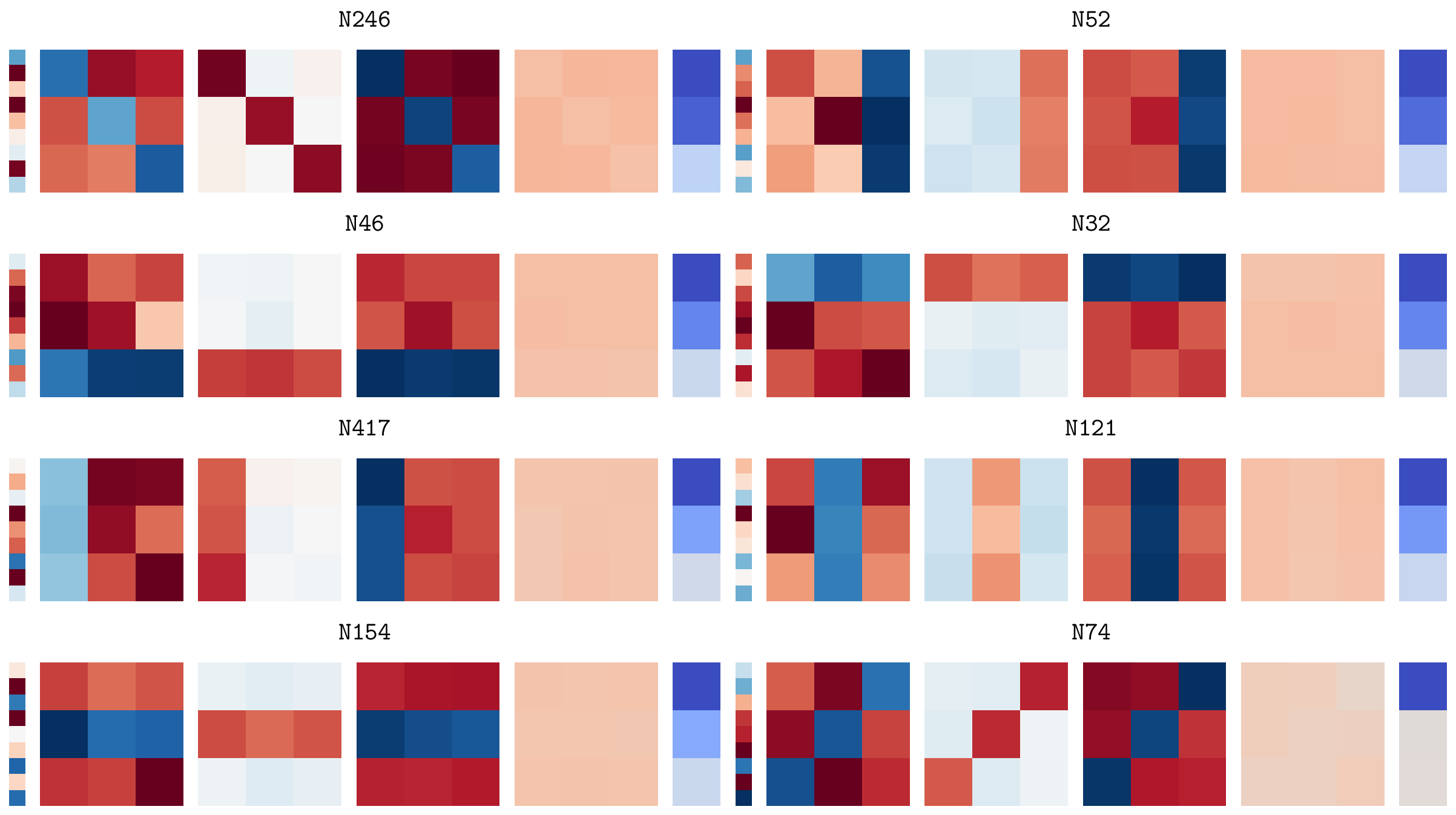TicTacGPT is a one-layer transformer model that is trained to model random Tic-Tac-Toe game sequences. This project fully reverse engineers TicTacGPT and identifies the input and output circuits of each neuron to understand how the model makes its predictions.
The write-up for this project is at report/build/main.pdf.
- TicTacGPT uses constant, chequerboard-like patterns. The first attention head attends to the moves played by the current player, while the second head attends to the moves played by the opponent.
- The skip connection around the MLP is almost entirely unused. In other words, most of the predictions are made directly by the MLP block (i.e. the neurons).
- 30% of the neurons are responsible for nearly all of the model's predictions.
- Of the 30% of neurons, most of them have an interpretable meaning. I identified the following classes of neurons:
- "X wins" neurons: These neurons that activate when X wins the game.
- "O wins" neurons: These neurons that activate when O wins the game.
- "Draw" neurons: These neurons that activate when the game ends in a draw.
- "Single move suppression" neurons: These neurons that suppress the logits of moves that have already been played.
- "Multi-move suppression" neurons: These neurons that suppress the logits of combinations of moves when some/all of the moves have already been played.
- "Anti-win" neurons: These neurons that suppress the logits of moves that would result in an immediate win.
- "Positional" neurons: These neurons that activate based on the turn number of the game.
